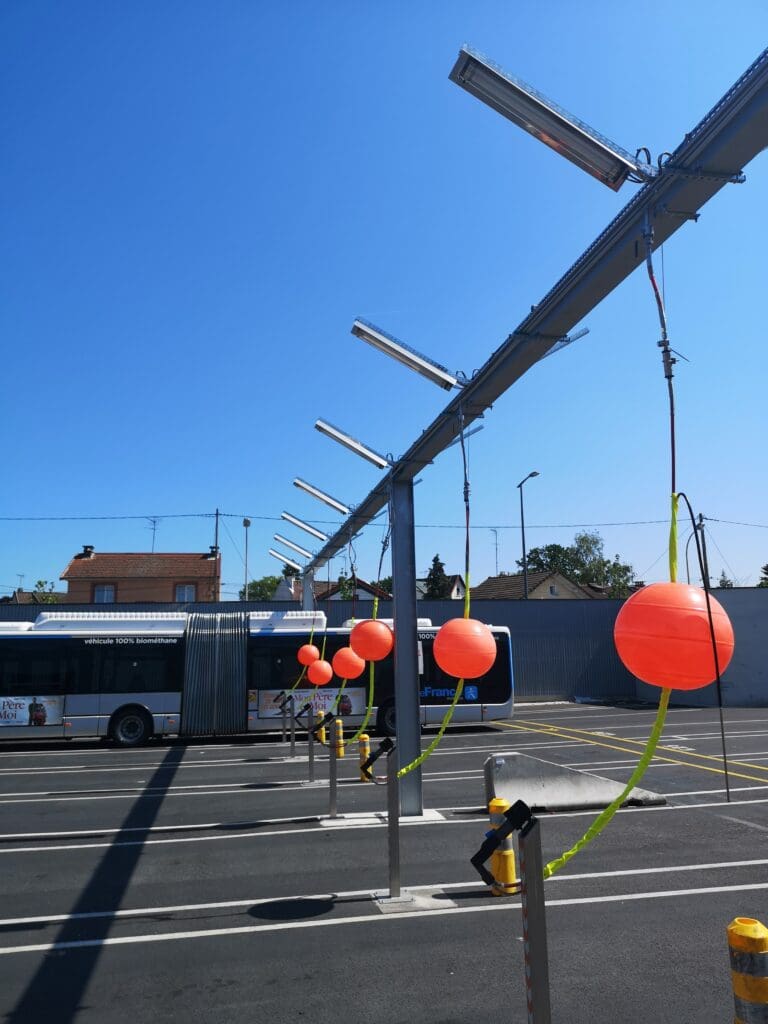RATP 2025: new lighting solutions for CNG and electric bus centres
9 years ago, RATP launched its Bus 2025 plan, with the aim of converting its entire bus fleet to electric and renewable gas (NGV) power within two years. RATP is relying in particular on Sammode, the benchmark for lighting in the transport sector, to equip its bus centres as effectively as possible.
RATP’s ambitious, environmentally-friendly project: new buses and renovated bus centers
Back in 2014, the Régie autonome des transports parisiens (RATP) embarked on an ambitious plan to convert 100% of its bus centers to electric and natural gas vehicle (NGV) power within two years. Called Bus 2025, this plan, seen as a major technological and ecological evolution, responds to the desire of Île-de-France Mobilités (IFDFM) to eliminate diesel buses from the Ile-de-France network.
As part of this project, RATP is radically transforming its bus centers, which are sites for parking and recharging vehicles, as well as carrying out maintenance and repair work. The public transport company is also renewing its entire bus fleet. Eventually, it will convert 50% of its bus centers to electric and 50% of its bus centers to bioGNV. A total of 25 bus centers will be modernized and equipped with environmentally-friendly buses by 2025.
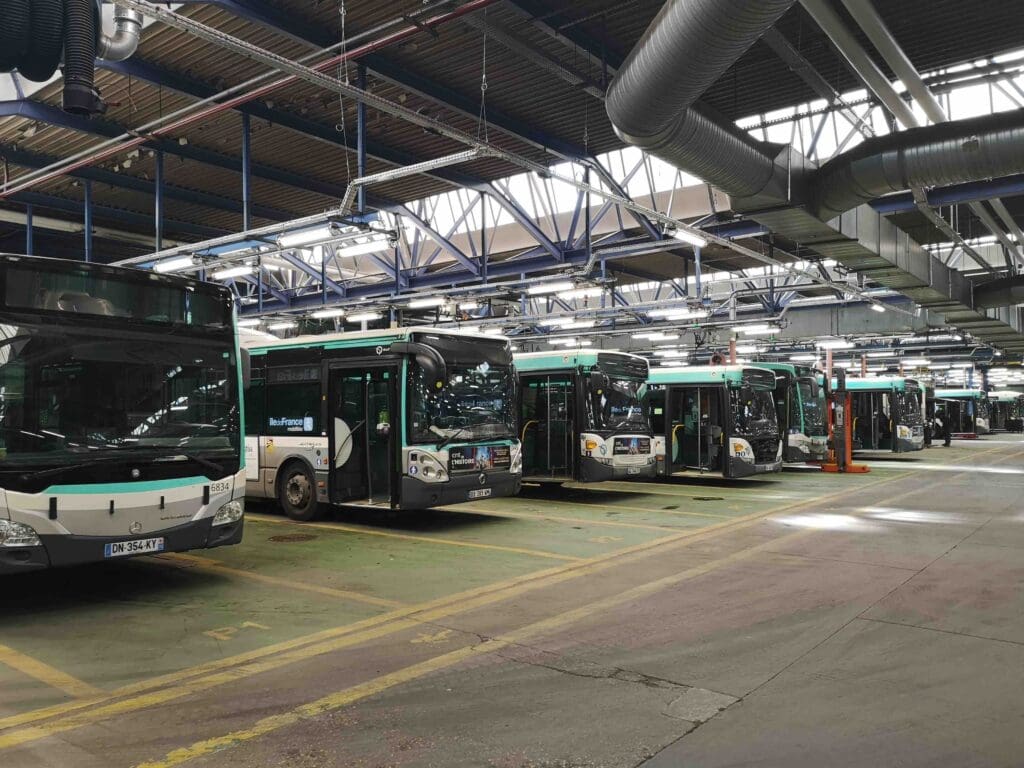
By 2025, RATP will have an environmentally-friendly fleet of 1,500 electric buses and 2,200 renewable gas buses in the Île-de-France region. 4,700 vehicles have been purchased for the entire program. Every year since 2021, the public transport company has been deploying 600 new buses. Thanks to the Bus 2025 plan, it expects to halve its carbon footprint.
To provide the best possible lighting for its new bus centers, RATP can count on experts in transport infrastructure lighting, such as Sammode, which also works with Société du Grand Paris, Keolis, Citura and Transdev.
Lighting solutions to meet all bus center requirements
Sammode offers quality luminaires for all bus center requirements. They work just as well outdoors (slow-charge zone, washing and parking) as indoors (parking zone, maintenance zone and fast-charge zone).
For gas bus centers, Sammode is the French specialist in luminaires adapted to the risks of explosive atmospheres (ATEX environment). Highly resistant, these ATEX-compliant technologies are lightweight, easy to install, modular and long-lasting (ultimate guarantee of 8 years in intensive 24/7 use, and a lifespan that can extend to several decades).
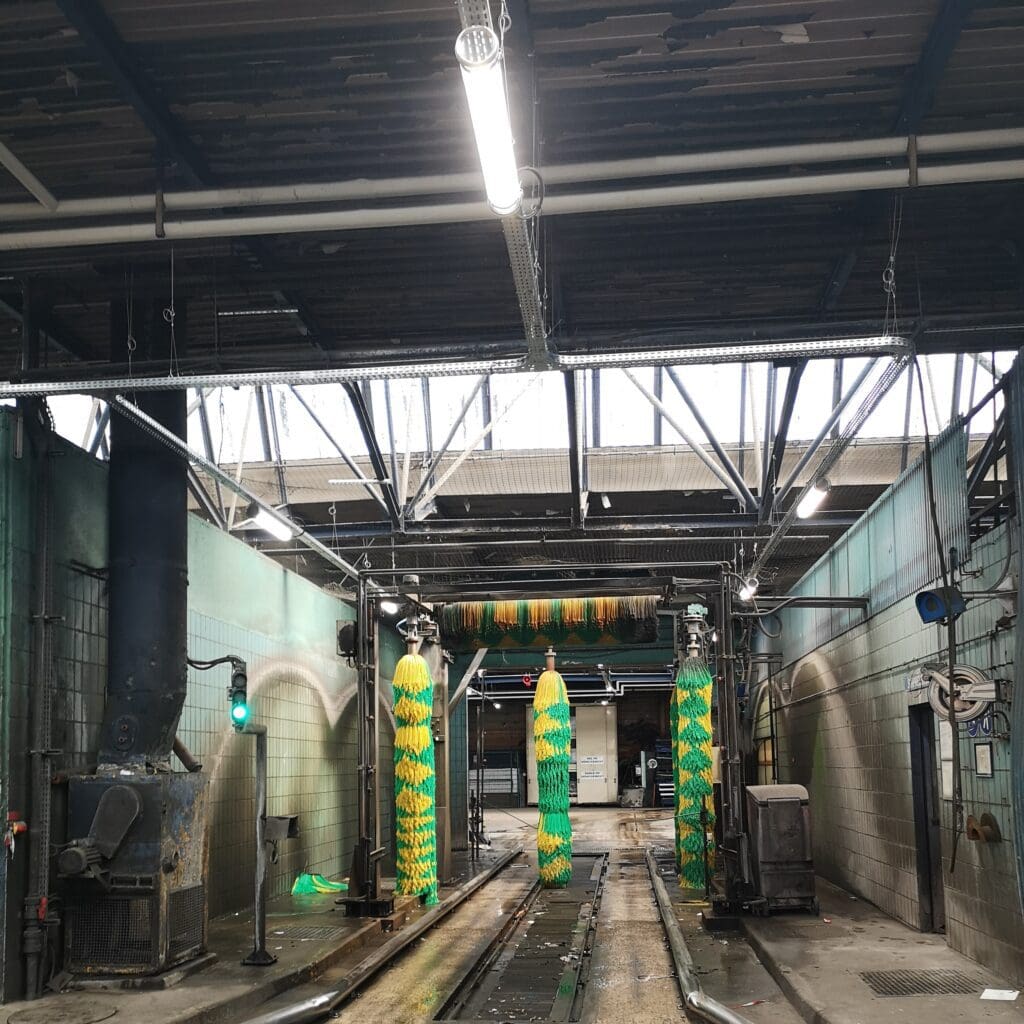
Sammode luminaires are also waterproof (IP66/68/69k), and the POME diffuser is shockproof (IK10), UV and chemical resistant. These are essential features, given that bus centers are subject to numerous constraints, such as dirt, dust, shocks, chemical aggression (maintenance areas) and vibrations. Outdoors, the luminaires are resistant to weather, humidity, sunlight and temperature variations.
It’s also worth noting that Sammode LEDs boast high performance thanks to their optics, enabling them to illuminate at 360°C, not just 180°C. This ensures optimum comfort for users (no glare, adapted flux, etc.).
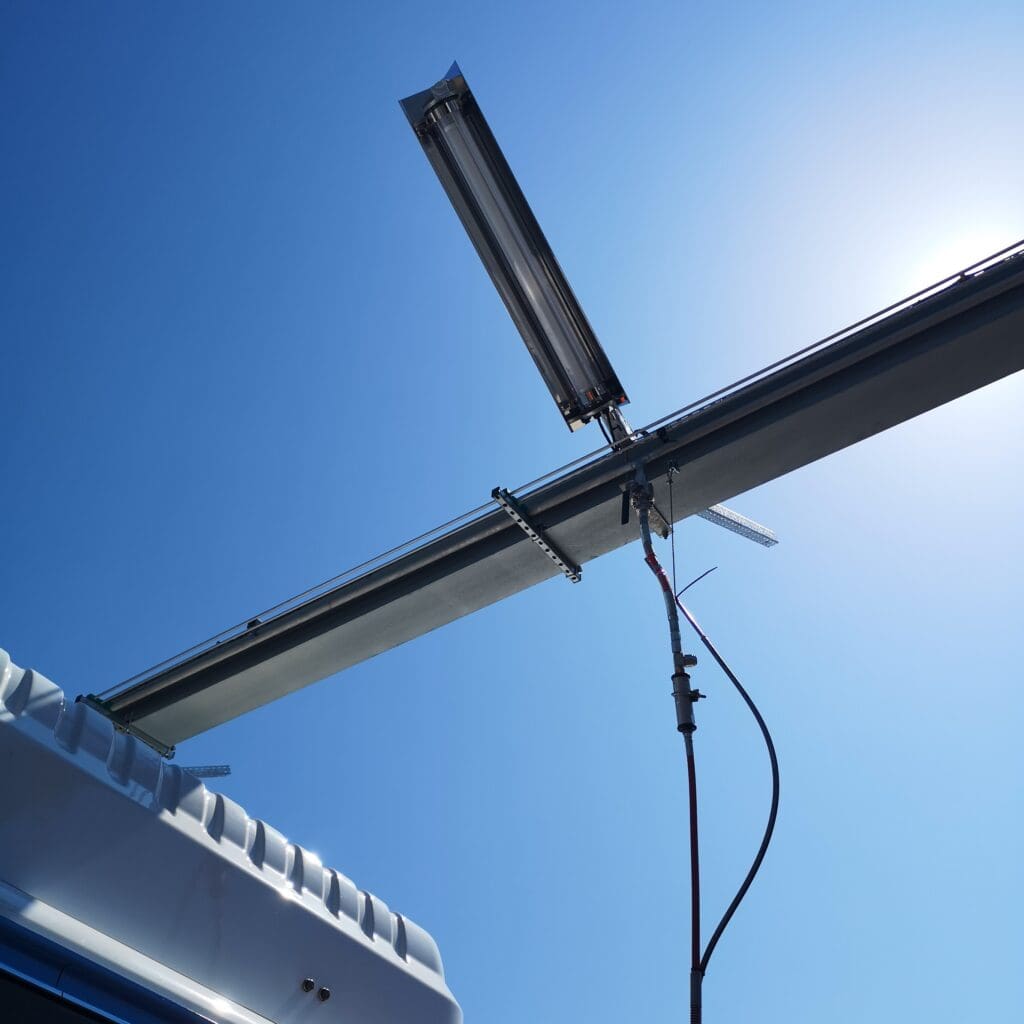
Sammode’s know-how also enables it to offer indoor luminaires that light up to 10 meters high, such as the FUMAT luminaire (for ATEX environments), or the FRESNEL (for electric bus environments). The French expert also offers lighting for confined spaces, such as the FOUCAULT, useful for bus pits. Outdoors, operators can also use powerful overhead floodlights (SILL 48).
With the same constraints as gas bus centers, but without the ATEX environment, electric bus centers can also benefit from Sammode luminaires on a daily basis. They are easy to install, reliable, long-lasting and durable. They also require little maintenance. Interior lighting (PASCAL tubular) and exterior lighting (SILL 48 floodlight) are also optimal for ensuring the safety of personnel and equipment.
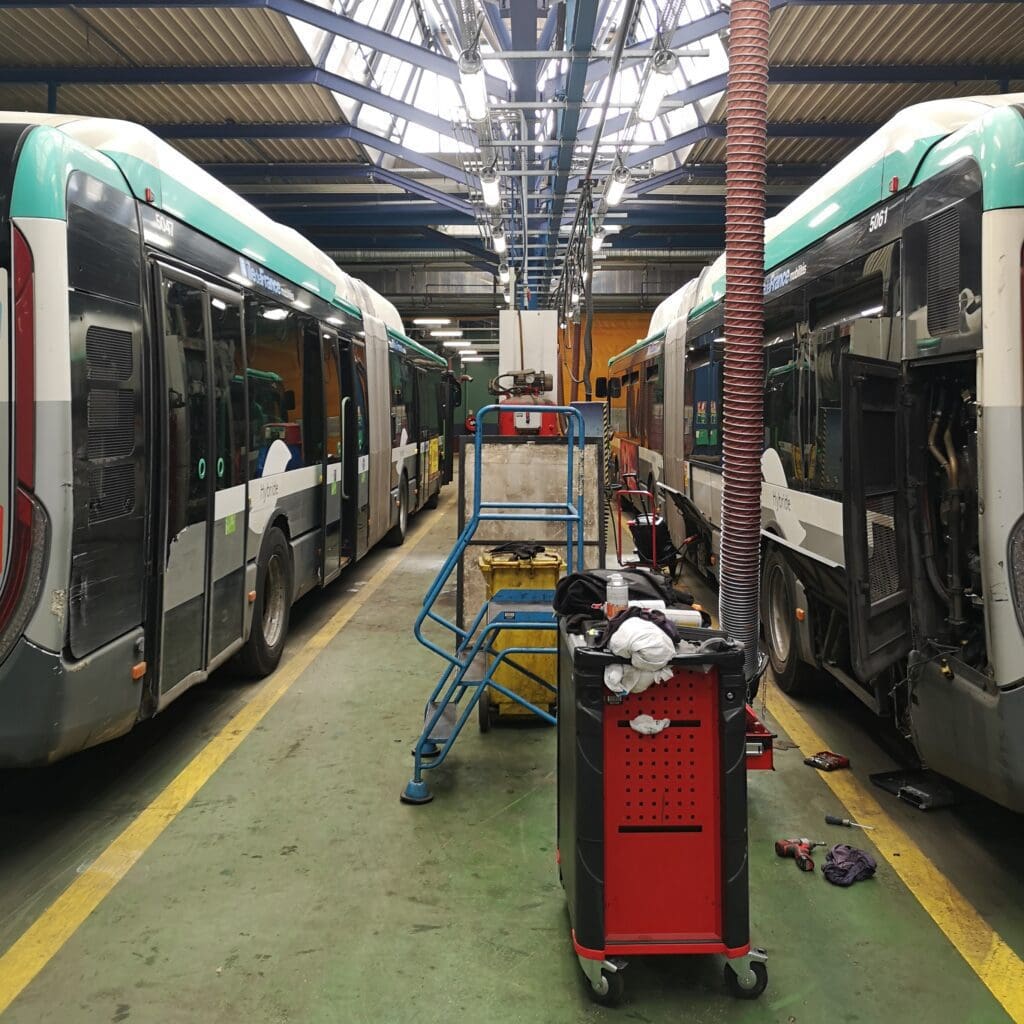
In addition to its technological expertise, Sammode offers tailor-made support to its customers, with advice and technical specifications from the ITC. Depending on each project and its specific constraints, Sammode’s lighting design office works to optimize layouts and the number of luminaires, and to comply with lighting standards. The expert is therefore able to adapt to any context and budget, while favoring sustainable, low-energy materials to help customers keep energy consumption under control.
